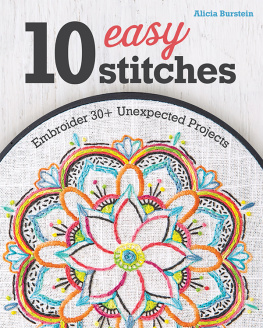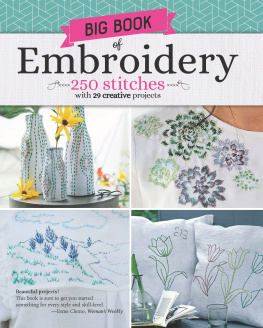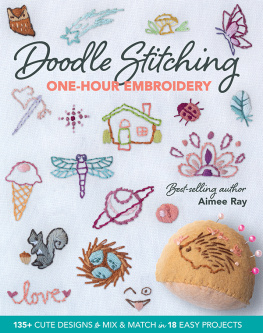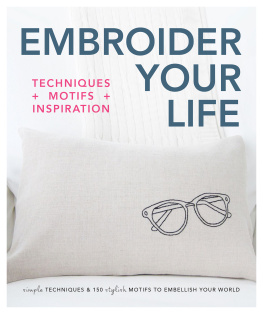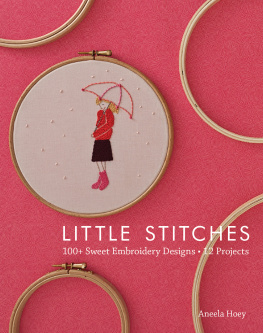Publisher: Amy Marson
Creative Director: Gailen Runge
Acquisitions Editor: Roxane Cerda
Managing Editor: Liz Aneloski
Editor: Kathryn Patterson
Technical Editor: Debbie Rodgers
Cover/Book Designer: April Mostek
Production Coordinator: Tim Manibusan
Production Editor: Jennifer Warren
Illustrator: Linda Johnson
Photo Assistants: Mai Yong Vang and Rachel Holmes
Style photography by Kelly Burgoyne, subject photography by Mai Yong Vang, and how-to photography by Rachel Holmes of C&T Publishing, Inc., unless otherwise noted
Published by Stash Books, an imprint of C&T Publishing, Inc., P.O. Box 1456, Lafayette, CA 94549
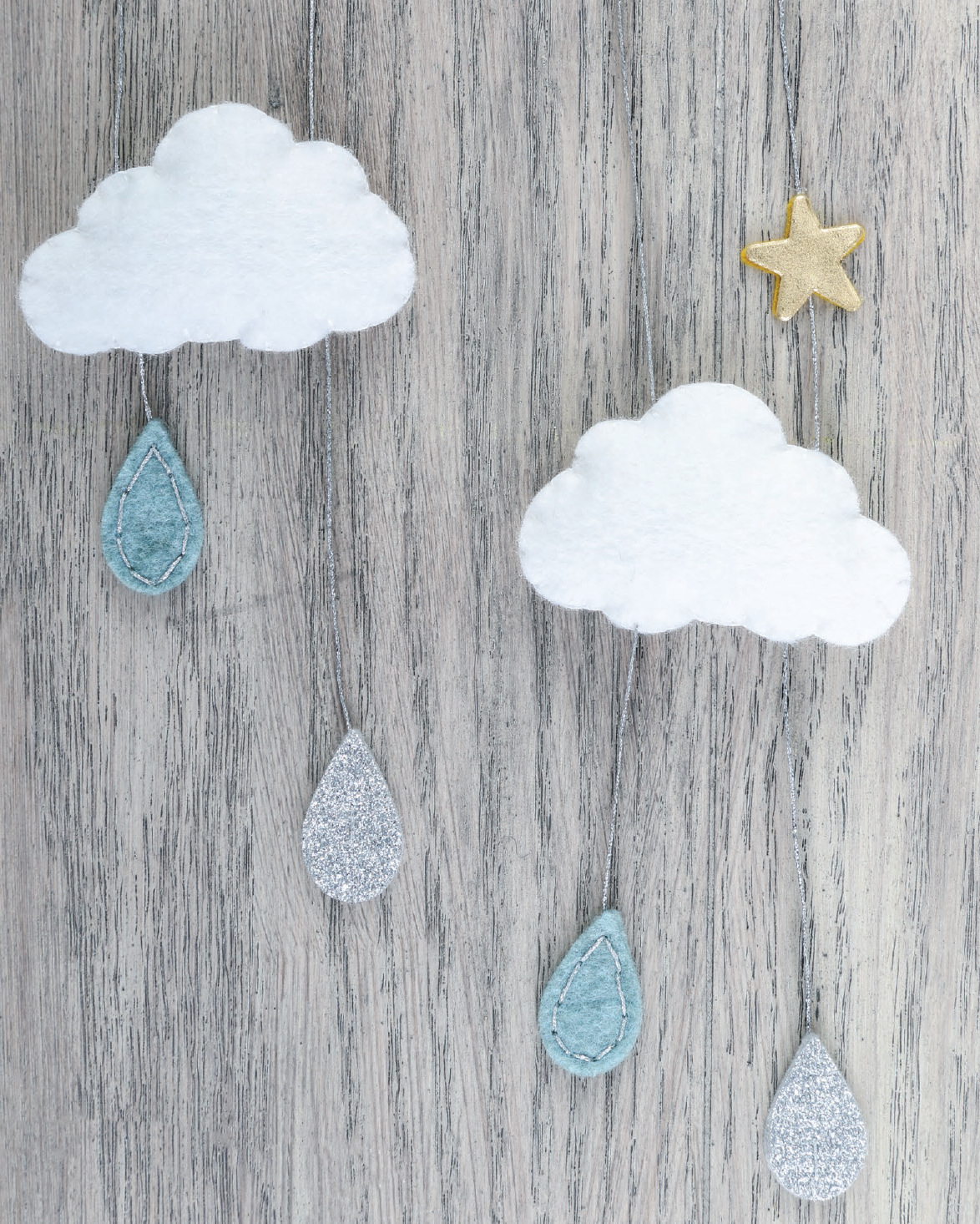
dedication
To Daniel, my other half. You keep me stable, inspired, and honest, and you make sure the doors are locked every night. I love you.
To my beautiful, funny, loving, challenging, goofy, intelligent children. You amaze me every day and give life purpose.
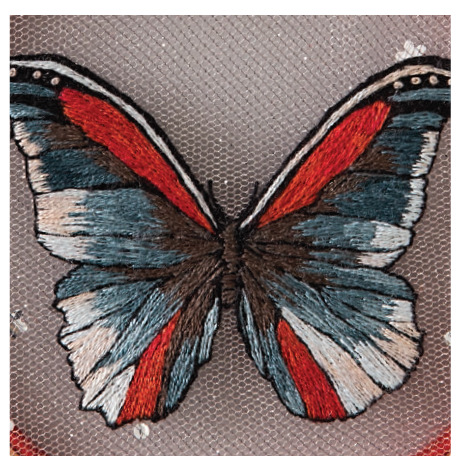
Acknowledgments
There are so many people I want to give a thank-you, a virtual high five, and a shout-out to! In no particular order, here they are:
Everyone at C&T Publishing. I couldnt have written this book without that lovely group of people taking a chance on a new author with a simple idea. I cant wait to do it again!
I want to thank my artists who supplied their art to be used as patterns:
Daniel Presedo, my dear artist husband, who draws the most amazing trees.
Gabrielle Price, a fourteen-year-old artist, who drew the beautiful ladies in the Pretty Girl Handkerchiefs.
Angele Carter, owner of the FabricAndInk shop, who created the Emperor Penguin Pincushion pattern just for this book! Head to her Etsy store (fabricandink.etsy.com) and drool over her beautiful felt and stitch work.
To the companies that supplied me with some of the most amazing materials and tools I could have asked for, I thank you! Your generosity is greatly appreciated. Thank you, Andover Fabrics, Inc.; Aurifil; Cloud9 Fabrics; Colonial Needle Company; Dear Stella; Kreinik Mfg. Co., Inc.; Riley Blake Designs; and The ThreadGatherer.
The most inspirational person in my crafty career is, as it is for many, my mother. As a rowdy little girl with Betty Boop curls, I was five years old when my mom turned to teaching me cross-stitch. I started with the little kits that included the metallic frame/hoops, moved onto reading patterns, and eventually made my own designs. Without her patience in teaching me the joy of making something with needle and thread, this book may have never existed. Thanks, Mom!
Introduction
Welcome! I am so excited to share a long-term passion of mine and cant wait to see and get inspired by how other makers use this book.
I created this book to fill a void I found when looking for my own embroidery projectsthe intermediate, quick-ish modern project that is just fun to do. When I would search for projects, they were either too complicated (I have an attention span issue), too kiddie, not complicated enough for my level, or not stylistically fun and interesting. So I set out envisioning projects that I got excited to make and that wouldnt take a month to finish.
My Stitching Motto: Be Free!
My motto in art is Be free! When using this book, I encourage you to allow your creativity to be free and to release the control that can be ingrained in hand sewists. Each project has directions, but think of them as guided suggestions. In fact, I purposely did not list which stitches and colors to use; it was not an oversight!
I want you to use your own ideas for stitches, your own color palettes, and your own creativity and style when doing these projectsor any project, for that matter. If you dont like the stitch used in the sample, then replace it with something you prefer. Use your favorites, learn something new, or experiment with different threads and weights. Go further and add beads to projects that dont call for them, try a color theme that you wouldnt normally choose, or try doing everything in inverse you never know what will be amazing and inspire you.
The Advanced Beginner Assumptions
This book is not intended to teach basic fundamentals. The following are some assumptions I made when creating these projects:
You have sewn something before. Perhaps nothing extravagant or museum ready, but you know how to thread a needle, use an embroidery hoop, and understand the general basics of hand sewing.
You are familiar with basic sewing terms and phrases such as right sides together and appliqu.
You want to expand your current skills and arent afraid of patterns that dont give explicit direction.
You have access to a computer and printer. (This is not required but will make projects much easier.)
You have used or are excited to use different materials and interfacings. Time to use up your stash!
Interchangeable Patterns
I have always loved sets of things. You know, like my favorite teacup collectionI cant have just one, so I have to get all of them. You will find that some of the projects have multiple patterns that go together. These are provided for you to completely make a collection yours. Pick your favorite, or make all of them to give as a completed set.
I have also used basic, easy patterns so that many of them can be exchanged from one project to another and sized up or down and still make great projects. The Pretty Girl Handkerchiefs can be made into gorgeous hoops ready to hang, and why not make the appliqu nursery animals into quilt squares and make a matching blanket?
Learn It
What we learn with pleasure we never forget.
Alfred Mercier
Needles and Fabric and Thread, Oh My!
For this embroidery book, there are supplies you will need to have and then optional materials that are really nice to have. As many of you arent true beginners, you may have at least a few of these lying around in your stash. If not? Well, I never pass up an excuse to go to the craft store!
NEEDLES
Your needle is a staple in all types of hand sewing. I have so many but only use about one to two in each project (except for specialty stitches). Needles are easy to find and usually cheap. In fact, some of my favorites are the needles that come in hotel mending kits: They are average in size and length, sharp, and free.
Needles come in different lengths and thicknesses; the rule of thumb is the bigger the number, the thinner the needle. The thickness of a needle is important because it is what makes the hole in your material. For woven fabrics, this doesnt mean much, but if you are stitching on leather or plastic, you want to walk the fine balance of keeping the hole small and not hurting your thread. This isnt hardit just takes a bit of practice.
Needles will be either sharp or blunt. For embroidery, you will almost always want a sharp needle because you need it to poke through the fabric. Blunt needles are used in cross-stitch on Aida cloth or while weaving so you dont pierce your threads, just wrap.
There are many types of needles, and each has some unique properties. Here are the top five that I use in most projects.
Embroidery or crewel: Sharp with a medium eye. This is the essential embroidery needle, and if you have to pick just one type, this is it.

Next page
